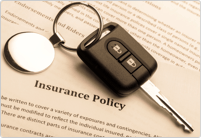Virtually all drivers know that drinking and driving is dangerous. Alcohol impairs judgment, vision, reaction time and muscle control – all abilities required for safe driving.
While drunk driving is on the decline, it remains an epidemic. In 2015, 10,265 Americans were killed in alcohol-related crashes – equivalent to one death every 51 minutes. According to surveys conducted by the AAA Foundation for Traffic Safety, 14% of drivers admit to having driven when they thought their Blood Alcohol Concentration (BAC) was close to or over the legal limit at least once in the past year. In total, alcohol-related crashes cost the public nearly $50 billion annually.
State laws across the country criminalize this behavior. In 49 states, it’s a crime to drive with a BAC at or above 0.08%. Utah became the first state in the nation to lower its DUI limit to 0.05%. Compared with sober motorists, drivers with a BAC of .08% are more than five times more likely to be involved in a fatal crash and four times more likely to be involved in a crash of any severity.
Drivers with a BAC below the legal limit can still be cited and arrested if their ability to drive is impaired. And even one drink can be too much. Compared with sober motorists, drivers with a BAC of .05% are three times more likely to be involved in a fatal crash and twice as likely to be involved in a crash of any severity.
Given these disheartening statistics, there is only one acceptable message for motorists: if you choose to drink, don’t drive. Use a designated driver or an alternate mode of transportation.
AAA is committed to educating members about the risks of drunk driving. Click here to learn more about the dangers of drinking and driving and click here to test your knowledge with a 12-question quiz.






